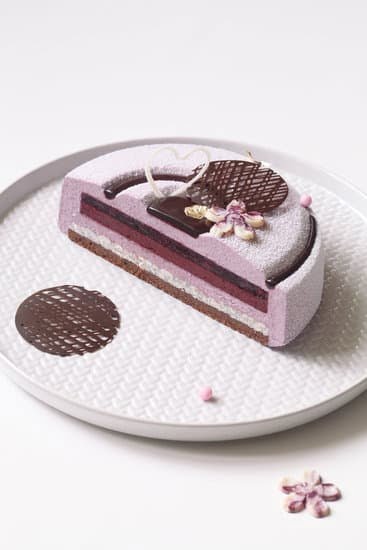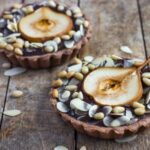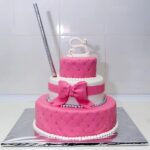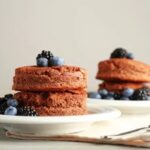Cake Decorating 101 Photos are here to help you jump on the hottest trend – cake decorating. Over the past few years, cake decorating has gained overwhelming popularity, becoming a creative outlet for both amateurs and professionals alike. Thanks to social media platforms and online communities, aspiring cake decorators can now showcase their creations to a wide audience and connect with others who share the same passion.
The rise of Instagram, Pinterest, and YouTube has significantly impacted the cake decorating industry. With just a touch of a button, novice bakers can access an abundance of inspiration and tutorials at their fingertips. These platforms have not only fueled creativity but have also made it easier than ever for beginners to learn the art of cake decorating.
To embark on your own cake decorating journey, you’ll need a set of essential tools. Piping bags, spatulas, turntables – these are just some of the basic tools that every decorator should have in their arsenal. Investing in high-quality tools is crucial for achieving professional-looking results. Don’t worry if you’re new to this; we will provide recommendations for beginner-friendly brands that won’t break the bank.
In this article, we will guide you through the fundamental techniques and skills needed to create beautiful cakes. From preparing your cake as a canvas to mastering piping techniques using buttercream or royal icing, each step will be accompanied by visually appealing Cake Decorating 101 Photos.
Brace yourself for an adventure into the world of colors, fondant coverings, creative toppers, troubleshooting common mistakes – all aimed at inspiring you to unlock your creativity and enjoy the art of cake decorating. So let’s dive in and discover why cake decorating is not just a trend but an exciting form of self-expression waiting for you to explore.
The Essential Tools You’ll Need for Cake Decorating
Cake decorating requires a set of essential tools that are necessary for achieving professional-looking results. These tools not only make the process easier and more efficient but also allow for greater creativity and precision in your designs. Here are some of the basic tools you’ll need to get started with cake decorating:
- Piping Bags: Piping bags are a must-have tool for creating intricate designs and decorative elements on cakes. They come in various sizes and materials, such as disposable plastic or reusable fabric, depending on your preference. It’s important to have a few piping bags on hand, as different colors or types of icing may be needed for different designs.
- Spatulas: Spatulas are used for spreading icing onto cakes and creating smooth surfaces. Offset spatulas are particularly useful for this task, as their angled blades allow for precise control when working with the sides of the cake. Straight spatulas can also be handy for certain techniques, such as creating sharp edges or spreading fillings.
- Turntable: A turntable is an essential tool that allows you to easily rotate the cake while decorating it. This 360-degree rotation ensures even and smooth application of frosting or design elements. Look for a sturdy turntable with a non-slip base to ensure stability during the decorating process.
Investing in high-quality tools is crucial for achieving professional results in cake decorating. While it may be tempting to go with cheaper options, low-quality tools can hinder your progress and make the process more challenging. They may not provide the same level of control or durability, leading to frustration and unsatisfactory outcomes.
Here are some beginner-friendly brands that offer reliable cake decorating tools:
- Wilton: Wilton is a well-known brand that offers a wide range of cake decorating tools suitable for beginners. They provide everything from piping bags to turntables at affordable prices.
- Ateco: Ateco is another reputable brand known for its high-quality cake decorating tools. Their products are widely used by professional bakers and decorators for their durability and precision.
- Kootek: Kootek offers affordable yet reliable cake decorating sets that include different piping tips, bags, and spatulas. These sets are perfect for beginners who want to explore various techniques without breaking the bank.
Having the right tools is the first step toward becoming a successful cake decorator. With these essential tools in your arsenal, you’ll be well-equipped to take on various techniques and create stunning designs. Remember to always invest in quality tools that will last you a long time and provide consistent results.
| Tool | Brand |
|---|---|
| Piping Bags | Wilton |
| Spatulas | Ateco |
| Turntable | Kootek |
Getting Started
Preparing your cake for decorating is an essential step in the cake decorating process. By properly leveling your cake and applying a crumb coat, you create a smooth canvas that allows for easier and more precise decoration. In this section, we will guide you through the steps of preparing your cake and provide Cake Decorating 101 Photos to visually illustrate the process.
- Importance of Leveling: A level cake is crucial for both aesthetics and structure. It ensures that your layers stack evenly, preventing any lopsided or leaning cakes. To level your cake, start by placing it on a sturdy surface. Use a long serrated knife or a cake leveler to carefully trim off any domed tops until you have an even, flat surface.
- Applying the Crumb Coat: The crumb coat is a thin layer of frosting applied to the entire cake to trap any loose crumbs before adding the final layer of frosting. To apply the crumb coat, first, place a dollop of frosting on the center of your cake board or plate to secure the cake in place.
Then, using an offset spatula or a bench scraper, spread a thin layer of frosting over the entire cake, making sure to cover all sides and edges. - Smoothing out Imperfections: Once you’ve applied the crumb coat, it’s time to smooth it out for an even finish. Dip your spatula or scraper in warm water and run it along the sides and top of the cake gently, using light pressure to smooth out any imperfections or rough edges.
By following these steps and incorporating these Cake Decorating 101 Photos into your process, you’ll be well on your way to creating beautifully decorated cakes. Remember to take it slow at first and practice regularly to refine your skills. With each attempt, you’ll improve and gain confidence in transforming plain cakes into edible works of art.
Mastering Piping Techniques
Introduction to Piping Techniques
When it comes to cake decorating, piping techniques play a crucial role in creating beautiful and intricate designs. From buttercream to royal icing, these techniques allow decorators to add texture, patterns, borders, and even delicate flowers to their cakes. In this section, we will dive into the world of piping and explore different techniques that every aspiring cake decorator should master.
The Basics: Getting Started with Piping
Before delving into advanced piping techniques, it is important to first become familiar with the basics. To begin your piping journey, you will need a few essential tools: piping bags and tips. Piping bags are available in various materials such as disposable plastic or reusable cloth. It is recommended to have a selection of different sizes for versatility in designs.
Next, you will need a set of piping tips. These tips come in different shapes and sizes, each designed for specific purposes. Some common types include round tips for basic lines and dots, star tips for making rosettes and shells, and petal tips for creating realistic flower petals.
Tip: Beginner-Friendly Brands
For those new to cake decorating, it is advisable to start with beginner-friendly brands that offer quality products at an affordable price. Some popular options include Wilton, Ateco, and JEM. These brands provide a wide range of piping tools suitable for beginners while ensuring durability and ease of use.
Creating Patterns, Borders, and Flowers
Once you have familiarized yourself with the basic tools, it’s time to take your skills up a notch by learning how to create various patterns, borders, and flowers using different piping techniques.
For patterns such as lattice or basketweave designs, use a flat straight tip or a basketweave tip. Simply pipe lines horizontally or vertically overlapping each other to achieve the desired pattern.
To add borders to your cake, star tips are popular choices. They can create elegant or playful borders with ease. For example, a large star tip can create swirls around the edges of a cake, while a small star tip can pipe delicate dots.
Lastly, flowers are an essential element in cake decorating. With petal tips, decorators can create beautiful roses, daisies, or other flower designs. Practice different techniques such as making individual petals and assembling them into a complete flower.
Cake Decorating 101 Photos: Visual Demonstration
Visual aids are invaluable when learning new techniques. In this section, we provide Cake Decorating 101 Photos that demonstrate step-by-step instructions for each piping technique mentioned above. These photos will serve as a visual guide to help you understand the process better and inspire your own creativity.
So grab your piping bags, tips, and some buttercream or royal icing and let’s dive into the world of piping techniques in cake decorating. With practice and patience, you’ll soon be able to add stunning details to your cakes that will impress friends and family alike.
Fondant Basics
Introducing the concept of fondant and its versatility in cake decorating, this section will provide readers with tips on how to achieve a smooth and flawless fondant covering. Fondant is a type of icing that can be rolled out into a thin sheet and draped over a cake for a clean and polished finish. It offers endless possibilities for creating intricate designs and decorations on cakes.
To achieve a smooth fondant covering, it is important to start with a well-leveled and crumb-free cake. Crumbs can cause imperfections in the finished look, so it is recommended to apply a crumb coat before applying the fondant. A crumb coat is a thin layer of buttercream frosting that acts as the foundation for the fondant.
Once the cake is ready, here are some tips for achieving a smooth and flawless fondant covering:
- Roll out the Fondant: Dust your work surface with powdered sugar or cornstarch to prevent sticking, then roll out your fondant using a rolling pin. Aim for an even thickness of about 1/8 inch.
- Lift and Drape: Gently lift the rolled-out fondant by wrapping it around your rolling pin or by carefully folding it in half. Position it over the top of your cake and slowly unfold it, allowing it to drape over the sides.
- Smooth the Top: Start smoothing the top of the cake with your hands or a fondant smoother, working from the center outward to remove any air bubbles or wrinkles.
- Smooth the Sides: Use your hands or a smoother to gently press against the sides of the cake, smoothing out any creases as you go.
- Trim Excess Fondant: Trim off any excess fondant using a sharp knife or pizza cutter, leaving about half an inch of excess at the bottom.
- Tuck and Neaten: Gently tuck the excess fondant under the cake using your fingers, creating a neat and clean edge.
By following these steps, you can achieve a smooth and flawless fondant covering that will provide the perfect canvas for further decoration. Remember to practice and be patient, as working with fondant may require some trial and error. With time and practice, you’ll be able to create stunning cakes with professional-looking finishes.
| Tools for Smooth Fondant Covering | Recommended Brands |
|---|---|
| Fondant rolling pin | Wilton |
| Fondant smoother | CK Products |
| Pizza cutter or sharp knife | OXO Good Grips |
Adding Color and Flair
In the world of cake decorating, color plays a vital role in creating eye-catching and visually stunning designs. Whether you want to create bold and vibrant cakes or subtle and elegant ones, mastering the art of food coloring and edible paints is essential.
In this section, we will explore the significance of color in cake decorating, discuss different types of food coloring and edible paints available, provide techniques for achieving beautiful gradients and hand-painted designs, and showcase Cake Decorating 101 Photos that exhibit stunningly colorful cakes.
Color is a powerful tool that can evoke emotions and set the tone for a celebration. It adds personality, excitement, and flair to any cake design. To achieve vibrant shades in your cakes, it is important to choose high-quality food coloring. Gel-based or concentrated liquid food coloring are preferred options as they produce more intense colors without altering the consistency of icings or batters. Powdered food coloring can also be used for achieving pastel shades.
When working with food coloring, it is important to remember that less is often more. Start with small amounts of color and gradually add more until you achieve the desired shade. This prevents overpowering the icing or batter with too much dye. Additionally, mixing primary colors (red, blue, yellow) can help create a wider spectrum of hues to play with.
Edible paints offer another dimension to cake decorating by allowing for intricate hand-painted designs on cakes. These paints come in various forms such as metallic liquid paints, dusting powders mixed with alcohol or lemon extract, or gel-based paints specifically formulated for cake decorating purposes. Experimenting with different brushes and painting techniques can help achieve unique effects like watercolor washes or fine detailing.
Cake Decorating 101 Photos will provide visual inspiration for incorporating color into your cake designs. From vibrant rainbow cakes to delicately painted flowers, these photos exemplify the versatility and beauty that color brings to cake decorating. So, let your imagination run wild, experiment with different color combinations, and create edible works of art that are sure to impress.
Remember, adding color and flair to your cakes is a chance to express your creativity. Don’t be afraid to try new techniques or mix unconventional colors. With the right tools and a touch of artistry, you can transform any cake into a showstopper.
Creative Cake Toppers
Cake decorating is not just about creating beautiful designs on the exterior of a cake, but it also allows for creative expression through the use of fondant figures and sugar sculptures as cake toppers. These unique embellishments add a touch of personality and whimsy to any cake, making them perfect for special occasions or themed events.
In this section, we will explore some inspiring ideas for creating fondant figures and sugar sculptures as cake toppers, provide step-by-step instructions for crafting popular figures, and showcase Cake Decorating 101 Photos that exhibit various adorable toppers.
One popular choice for fondant figures is to create animals. Whether it’s a cute farm animal-themed birthday cake or an elegant safari-inspired wedding cake, fondant animals add charm and playfulness to any design. To make fondant animal figures, start by kneading your desired color of fondant until it becomes smooth and pliable.
Then, shape the body using the appropriate colors for each part (e.g., pink for pigs, brown for lions). Use edible glue or water to attach different components like ears, snouts, tails, or wings. Finally, add small details like eyes and whiskers using food-grade markers or thin paintbrushes with food coloring gel.
Another popular choice for fondant figures and sugar sculptures is creating characters from movies, cartoons, or video games. These figurines are especially beloved by children and fans of specific franchises. To create these figures, start with a reference image that you wish to replicate in fondant form.
Break down the figure into basic shapes and build up from there using colored fondants or gum paste. Sculpt each detail separately before attaching them together using edible glue or toothpicks if necessary. Don’t forget to pay attention to fine details like facial expressions or small accessories that make the character recognizable.
In addition to animals and characters, you can also let your imagination run wild by creating unique objects as cake toppers. These can include items like miniature suitcases for a travel-themed cake, tiny musical instruments for a music lover’s birthday, or even sports equipment for a cake celebrating a sports enthusiast.
The key here is to think outside the box and use fondant or gum paste to mimic the appearance of these objects. Sculpting techniques such as rolling, shaping, and cutting will help you achieve the desired shapes and textures.
Check out the Cake Decorating 101 Photos below to see some impressive examples of fondant figures and sugar sculptures. These photos will inspire you to get creative and start experimenting with your own unique cake toppers.
- Photo 1: Fondant animals on a farm-themed cake
- Photo 2: Fondant characters from popular animated movies
- Photo 3: Miniature objects made from fondant representing various themes Cake decorating becomes truly magical when you can create custom fondant figures and sugar sculptures that perfectly complement your cake design. So don’t be afraid to let your imagination take flight and bring your vision to life with these adorable and eye-catching cake toppers.
*Please note that if you are new to cake decorating, it may take some practice before achieving professional-looking fondant figures or sugar sculptures. Don’t be discouraged by initial attempts – keep practicing and remember that every mistake is an opportunity for growth.
Troubleshooting Common Cake Decorating Mistakes
When it comes to cake decorating, even the most experienced decorators can make mistakes. Don’t worry, though, as there are several common mishaps that can easily be fixed with a few simple tips and tricks. In this section, we will address some of the most common cake decorating mistakes and provide solutions to help rectify them.
- Uneven Frosting: One of the most frustrating cake decorating mistakes is achieving an uneven frosting finish. To fix this issue, start by applying a crumb coat and chilling the cake for about 15 minutes in the refrigerator. Then, reapply another thin layer of frosting using long strokes to create a smooth surface. Use a bench scraper or offset spatula to even out any imperfections.
- Cracked Fondant: Fondant cakes can be stunning when done right, but cracking fondant can quickly ruin the overall look. To prevent this issue, make sure your cake is completely covered in a layer of buttercream before applying fondant. If cracks do appear, use a small amount of shortening on your fingertips to gently rub over the cracks until they blend in seamlessly.
- Air Bubbles in Gum Paste: Gum paste is often used for intricate decorations such as flowers or figurines. However, air bubbles can form and spoil the appearance of these delicate pieces. To combat air bubbles, knead gum paste properly before working with it and let it rest for 10-15 minutes before shaping into your desired design. It’s also helpful to use a cocktail stick or pin to prick any trapped air bubbles gently.
By following these troubleshooting tips and practicing patience, you’ll be able to overcome common cake decorating mistakes and achieve beautiful results every time. Remember that even professionals encounter challenges along the way but don’t let them discourage you from exploring your creativity through cake decorating.
- Uneven Frosting
- Cracked Fondant
- Air Bubbles in Gum Paste
Conclusion
In conclusion, cake decorating has become a hot trend in recent years, largely due to the influence of social media and online platforms. People have discovered the joy of transforming a simple cake into a work of art, and the possibilities are truly endless.
However, it is important to have the essential tools for cake decorating in order to achieve the best results. Investing in high-quality tools such as piping bags, spatulas, and turntables will make the process much smoother and more enjoyable.
Preparing your cake properly is crucial when it comes to cake decorating. Leveling the cake and applying a crumb coat are essential steps that create a smooth canvas for decorating. Following step-by-step instructions and visual guides, such as the Cake Decorating 101 Photos provided, will help beginners master these techniques with ease.
Throughout this article, we have explored various techniques in cake decorating, from mastering piping techniques to creating flawless fondant coverings. The use of color and creative cake toppers add flair and personality to any design. We have also addressed common mistakes made by beginners and provided solutions for rectifying them.
Frequently Asked Questions
How do you decorate a cake professionally?
Decorating a cake professionally requires a combination of skill, creativity, and attention to detail. To start, it is important to level the cake layers so that they are even and stack nicely. Next, crumb coat the cake by applying a thin layer of frosting all over to seal in any loose crumbs. This will create a smooth base for your final decorations.
Then, you can use various techniques such as piping designs with buttercream or royal icing, creating fondant accents or flowers, and adding edible embellishments like sprinkles or edible pearls. Remember to experiment with different tools like piping bags, spatulas, and offset spatulas to achieve clean lines and precise decorations. Practice is key as it allows you to refine your skills and develop your own unique decorating style.
How to make icing for a cake for beginners?
Making icing for a cake as a beginner can be quite simple. One basic option is buttercream icing which only requires a few ingredients: softened unsalted butter, powdered sugar, vanilla extract (or other flavorings), and milk or heavy cream if needed for consistency. Start by creaming the softened butter until smooth and then gradually add powdered sugar until it reaches the desired sweetness and consistency. Add vanilla extract for flavoring and continue mixing until well combined.
If the icing seems too thick, add milk or heavy cream in small increments until it becomes more spreadable or pipeable depending on your needs. Another option for beginners is ganache which consists of melting chocolate with heavy cream in a double boiler until smooth and glossy. Once cooled slightly but still pourable, drizzle it over the cake or use an offset spatula to spread it evenly on top.
What toppings can you put on a cake?
When it comes to toppings for cakes, there are numerous options available depending on personal preferences and the occasion for which the cake is being prepared. Popular toppings include fresh fruits such as berries or sliced kiwi that not only add color but also provide a refreshing burst of flavor when paired with cake. Another option is crushed nuts like almonds, walnuts, or pecans, which offer both texture and a hint of nuttiness. For a more indulgent touch, chocolate shavings or curls made by scraping a bar of chocolate can be sprinkled on the cake’s surface.
Whipped cream can also be used to add lightness and creaminess to a cake, especially when piped decoratively around the edges or between layers. Additionally, edible flowers like pansies or violets can add an elegant and natural beauty to the cake. Ultimately, the choice of toppings should complement the overall flavor profile of the cake and provide an appealing visual presentation.

Welcome to our cake decorating blog! My name is Destiny Flores, and I am the proud owner of a cake decorating business named Cake Karma. Our mission is to provide delicious, beautiful cakes for all occasions. We specialize in creating custom cakes that are tailored specifically to each customer’s individual needs and tastes.





